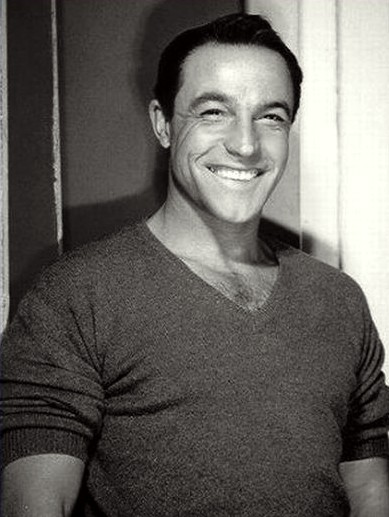Happy birthday, Gene Kelly!
Posted by Ivan G. Shreve, Jr. on Aug 23rd 2012
Eugene Curran “Gene” Kelly was born 100 years ago on this date—a Pittsburgh, PA native from the Highland Hills section of that American city. The man who would later establish himself as one of the most talented and innovative practitioners of the terpsichorean art began his dancing career at the age of eight, when his mother enrolled him in classes along with his brother James. Both Kelly boys thought dancing was for “sissies” (and so did their peers, who routinely engaged the brothers in fistfights) and instantly rebelled…but Gene was persuaded to take up dancing again when he turned fifteen, reasoning it might be a surefire way to get girls.

Though he graduated from high school (Peabody High) in 1929, the realities of the economic crash put off his college studies until 1931—where, having enrolled at the University of Pennsylvania, he found his love for dancing much in demand in the school’s many Cap and Gown theatrical productions and outside school, where his family started a small dance studio in a nearby Pittsburgh neighborhood (it was renamed The Gene Kelly Studio of the Dance in 1932, with a second studio established in Jamestown the following year). Dancing for Gene was originally a sideline; he had set his sights on a career in law, but two months after enrolling in law school Kelly made the decision to stick with dancing, traveling to New York by 1937 seeking work as a choreographer.
Locating a job in the Big Apple wasn’t as easy as Gene had hoped—he returned to Pittsburgh in 1938 to work as a choreographer at the Pittsburgh Playhouse. When dancer-choreographer Robert Alton observed Kelly’s teaching skills while Alton was staging a show at the Playhouse, Gene was hired to be a dancer in the Cole Porter musical Leave It to Me!—the production that featured Mary Martin’s rendition of “My Heart Belongs to Daddy”. A plum assignment in another Alton-choreographed show, One for the Money, followed…and then Kelly hit the big time, appearing in the Pulitzer Prize-winning The Time of Your Life in 1939. Gene also worked as a choreographer on Billy Rose’s Diamond Horseshoe, where he met future wife Betsy Blair, and by 1940 with the lead role in the musical Pal Joey, Hollywood came calling.

Kelly had signed a contract with mogul David O. Selznick…but Selznick sold half of his contract with Gene to M-G-M for his motion picture debut in 1942, Me and My Gal. The picture (in which Kelly co-starred with Judy Garland) did extremely well, and against the advice of the studio, M-G-M unit producer Arthur Freed picked up the other half of Kelly’s contract, securing the performer’s movie stardom. Before serving a hitch in the U.S. Naval Service in 1944, Gene appeared in such pictures as Du Barry Was a Lady, Thousands Cheer and The Cross of Lorraine; upon his release in 1946 he could be seen in The Pirate, The Three Musketeers and Take Me Out to the Ball Game. This last film convinced producer Freed to allow Gene to try his hand at directing, which he did with the movie musical classic On the Town. A string of hit films followed after that, many of them considered textbook examples of the American movie musical including Summer Stock, An American in Paris, Singin’ in the Rain, Brigadoon, It’s Always Fair Weather and Les Girls. Even with the decline of the musical in the late 50s, Gene continued to appear in popular films such as Marjorie Morningstar and Inherit the Wind while directing movies as varied as The Tunnel of Love, Gigot and A Guide for the Married Man.
During his Hollywood musical heyday, Gene was in demand on many of the aural medium’s popular programs: he did radio versions of his films on series like The Lady Esther Screen Guild Theatre (Me and My Gal in 1943) and The Lux Radio Theatre (Anchors Aweigh in 1947) and stretched his singing and dramatic talents on the likes of The Theatre Guild on the Air, The Cresta Blanca Hollywood Players, Studio One, Family Theatre, The Sealtest Variety Theatre and The Railroad Hour. He joked along with Jack Benny and George Burns & Gracie Allen, and sang along with Bing Crosby, Frank Sinatra and Dinah Shore. He was also a favorite of “radio’s outstanding theater of thrills,” Suspense—a show on which he made four appearances between 1943 and 1949.
Radio Spirits wants to wish him the happiest of centennial birthdays.

